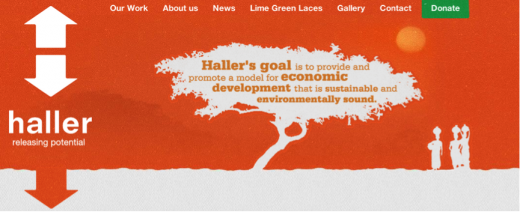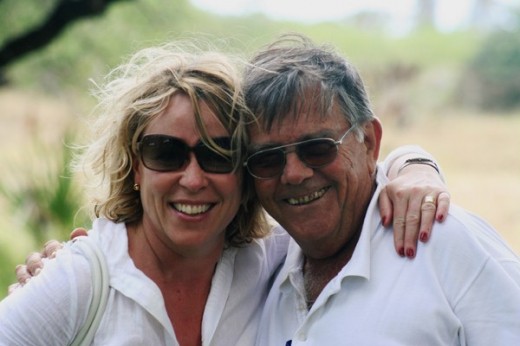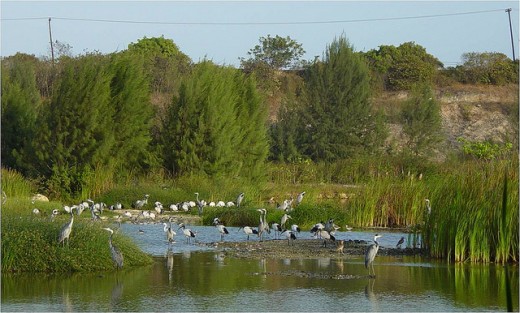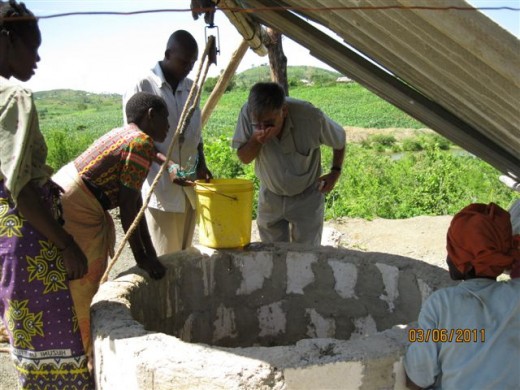The Haller Foundation does remarkable work. It provides practical approaches to transforming communities and releasing many forms of potential.
The video above shows some of the many ways these ideas have been translated into action to enable life to flourish. Below are excerpts from its website. You can discover more via the following link.
What We Do
Our work is based on the techniques of the award-winning environmentalist, Dr. Rene Haller, a UNEP Global Laureate renowned for his restoration of cement quarries in Kenya.
We use a similar model of environmental regeneration to bring economic security to poor, small-holder farmers living on inhospitable land.
We address communities’ basic needs through an integrated set of programmes in water, farming, education, health, alternative energy and nano-enterprise.
Haller’s community partnerships are not quick fixes, rather they offer long term, life-skills training which empower farmers and their children to lead self-sufficient and sustainable lives.
About Us
Haller was set up as a charity in 2004 by Louise Piper and Julia Hailes MBE. They were inspired by the work of Dr. Rene Haller, who is most famous for rehabilitating a barren cement quarry into a flourishing natural park – now known as Haller Park.
In 1970, ‘Haller Park’ was an industrial wasteland. The quarry floor was barren and hard as rock, the air temperature was 40°C and the groundwater was saline.
Although reclamation of industrial wasteland was virtually unheard of in the 1970s, Dr. Haller set out to change that. He remembers:
“My vision was to establish a multitude of plants, providing food and shelter to a large variety of animals.”
Through careful observation of how plants and animals interact, and a series of trial and error experiments, Dr. Haller managed to transform the industrial wasteland into a flourishing natural park – now known as Haller Park.
Over 1 million trees were planted in the quarry, and a range of insects, butterflies, birds and mammals were also introduced. Each plant, insect or animal had a purpose to keep the ecosystem in balance.
Haller Park is now home to a range of endangered flora and fauna, and is recognised by the Eden Project as one of the ten most effective environmental restoration projects in the world.
Dr. Rene Haller and Louise Piper (Co-founder).
Dr. Haller’s Principles
Rene Haller’s work has provided inspiration and acted as a positive model for people in many fields. Below are twelve principles that he invites people to consider when focusing on what they want to give to the world.
1. Passion And Belief
Live your passion and believe in what you do.
2. Think Big, Start Small
Think big but start small – this allows you to test your actions and learn from your mistakes without risking great damage.
3. Self Sustaining Eco-Systems
Aim to create an eco-system where plants, animals and technologies are inter-dependent and self sustaining. So, for example, not just tree planting on its own – and no monocultures!
4. Waste
In nature there is no waste – it is man’s invention. If you see waste, think how to reduce it and ultimately how to use it.
5. Biological Not Chemical
Use biological systems not chemical ones.
6. Animal Perspectives
Look at problems from an animal or plant’s perspective and imagine what is needed to make them grow and flourish – reducing animal stress will increase their resistance to disease.
7. Indigenous
Try to use indigenous plants and animals – foreign ones are likely to import problems.
8. Be Inventive
Be prepared to come up with and try out new ideas.
9. Local Knowledge
Find out what people in the area already know – learn from their wisdom, consult and involve them whenever possible.
10. Incentives
Provide incentives for people to do the right thing – for example, encouraging people to value wildlife and their habitat, both intrinsically and as a source of income.
11. Local
Don’t get too big and centralised – it makes sense to have production close to the source of the material.
12. Economics
Make sure that whatever is done makes economic sense – sometimes one project on its own won’t pay back but in conjunction with other projects it will.
You can also discover more about this ongoing work at The Baobab Trust. This aims to work with communities and the environment to create a better tomorrow.










Leave a Reply